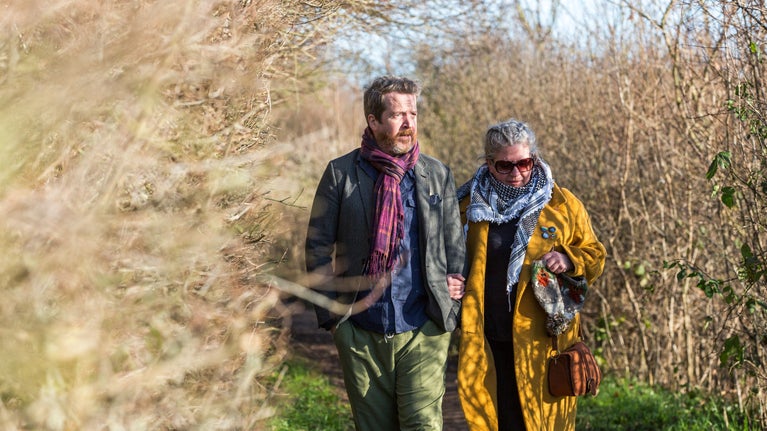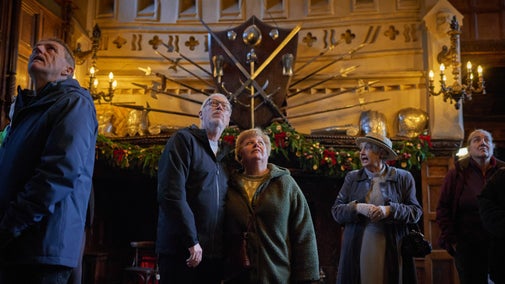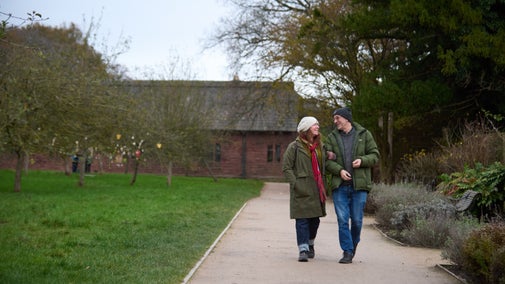
Discover more at Speke Hall
Find out when Speke Hall is open, how to get here, the things to see and do and more.

A glimpse into Speke Hall’s past is a journey through a history of empire, where successive generations of Speke’s owners played their part in the East India Company, Atlantic slave-trading, plantation slavery and international politics. Learn about Speke Hall’s colonial connections and the lives of its previous residents.
Speke Hall’s close proximity to Liverpool, once Britain’s largest slaving port, enabled its owners to play key roles in the British empire for nearly four hundred years.
During all this time, Speke was owned by just two families: the Norrises and the Watts. Their stories show how imperial involvement enriched one already wealthy family and provided the other, a family of humbler origins, with a vast fortune and high social position.
The Norris family were the owners of Speke from the 13th century and had a seat in Parliament from 1324. By the end of the 17th century, as Britain’s colonial expansion accelerated, the Norris family were already skilled in promoting their business interests in the Commons.
It is often suggested that Liverpool was little more than a fishing village before its explosive growth at the end of the 18th century, but it had been a significant trading port since receiving its Royal Charter in 1207. So too did the Norris family play an important part in the development of Liverpool.
- A chronicler writing on Liverpool at the end of the 17th century
William, Edward and Richard were the sons of Edward Norris (1618–87). Each, at some point, owned Speke and each played a part in trading with both the East and West Indies.

Sir William Norris, 1st Baronet (1658–1702), used his position as MP for Liverpool to protect the city's tobacco and sugar interests.
In India, Norris was accompanied by over 60 Europeans and 300 Indians when he made an entrance to meet the Grand Mughal Aurangzeb (1618–1707), as head of a trade delegation for a ‘new’, parallel East India Company.
His negotiations failed, however, as the Grand Mughal much preferred his existing deal with the well-established East India Company. William left India with 147,000 rupees, of which 87,000 were for him. He did not survive the voyage back and was buried at sea.
Edward Norris (1665–1726) had accompanied William to India as company secretary. As MP for Liverpool, he fought for his family’s interests and invested in schemes to improve road and canal routes to the city.
Richard Norris (1670–1730) traded not only in tobacco and sugar but also in enslaved African people. Like his brothers, he represented Liverpool in UK Parliament and in 1709 was part of a committee to expand trading links with Africa.
Richard was central to improvement schemes at Liverpool docks, ensuring berthing for ever-larger ships.
Richard Watt I (1724–96), a former hackney-carriage driver, owned a plantation in Jamaica and acted as an estate manager – then known as an attorney – on others.
He returned briefly to Liverpool in 1769, where he set up a lucrative trading house for Jamaican goods.
Settling finally in Britain in 1782, he set himself up as a considerable landowner. That year, he bought Oak Hill House, Liverpool and Bishop Burton estate, east Yorkshire. In 1795, he purchased Speke but never actually lived there.

Although Richard expressed concern about the brutality of plantation slavery, he nonetheless went on to invest in three slaving voyages in the 1760s and 70s.
In 1793, he bought a slaving ship which transported 549 African people to Jamaica. Of these, 539 survived the journey.
His ownership of slaves in Jamaica is detailed in his will of 1796 which lists ‘Negroes and other Slaves together with the issue offspring and increase of the Females of such Slaves.’
Richard Watt III (1786–1855) was the great-nephew of the first Richard Watts. He was brought up at Bishop Burton to enjoy the advantages of wealth and privilege.
On inheriting Speke in 1807, he set about restoring it from the neglect of his Watt predecessors to ‘true Baronial Magnificence’, however, he abandoned the work before completion.
Showing little interest in his slave-worked Jamaica estates, Richard was happy to leave them in the hands of attorneys. On the abolition of slavery in the 1830s, Richard was awarded £4,485 4s 9d (just under £600,000 at today’s value) for the manumission of 256 enslaved African people.
This money was, through subsequent generations, spent on renovating Speke Hall as well as on the built heritage (often through philanthropy) of Liverpool itself.

Find out when Speke Hall is open, how to get here, the things to see and do and more.
Since Sir William Norris began building Speke Hall in 1530, its survival hasn't always been guaranteed. Discover the stories of the people who have lived at Speke Hall.

Discover the hall's fascinating objects and architectural features and learn about the Norris family’s dangerous life under Elizabethan rule.

From peaceful strolls through colourful borders, to adventures in the woodland and spotting wildlife in the secret garden, there's plenty of seasonal joy to find at Speke Hall.

Learn about the important work that the conservation team are doing to preserve Speke Hall in Liverpool and the tools they use to do so.
